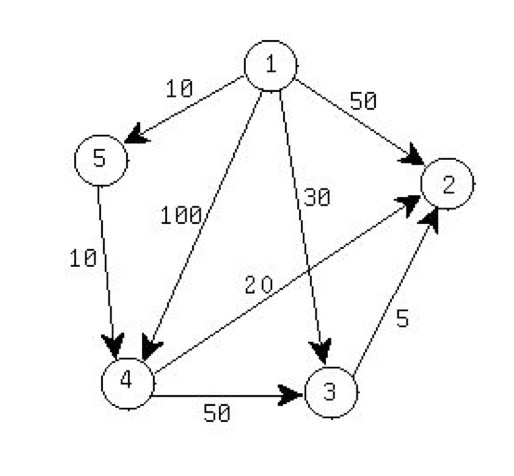Explaining the Dijkstra's Algorithm Steps on the Example Graph

When Dijkstra's algorithm is used to find all the shortest paths from 1 to the other nodes, it proceeds as indicated in the table below.
Step v C BackPoint Dist
Init -- {2,3,4,5} [X,1,1,1,1] [0,50,30,100,10]
1 5 {2,3,4} [X,1,1,5,1] [0,50,30,20,10]
2 4 {2,3} [X,4,1,5,1] [0,40,30,20,10]
3 3 {2} [X,3,1,5,1] [0,35,30,20,10]
In step 1, we choose node 5 because Dist[5]=10 is minimal. Dist[4] then changes from 100 to 20 because path 1-->5-->4 is shorter than path 1-->4. BackPoint[4] changes from 1 to 5 to indicate that the shortest known path from 1 to 4 now has 5-->4 as its last edge.
In step 2, we choose node 4 because now Dist[4]=20 is the minimal distance value. Dist[2] changes from 50 to 40 because path 1-->5-->4-->2 is shorter than path 1-->2. BackPoint[2] changes from 1 to 4 to indicate that the shortest known path from 1 to 2 now has 4-->2 as its last edge.
In step 3, we choose node 3 because now Dist[3]=30 is the minimal distance value. Dist[2] changes from 40 to 35 because path 1-->3-->2 is shorter than path 1-->5-->4-->2. BackPoint[2] changes from 4 to 3 to indicate that the shortest known path from 1 to 2 now has 3-->2 as its last edge.

